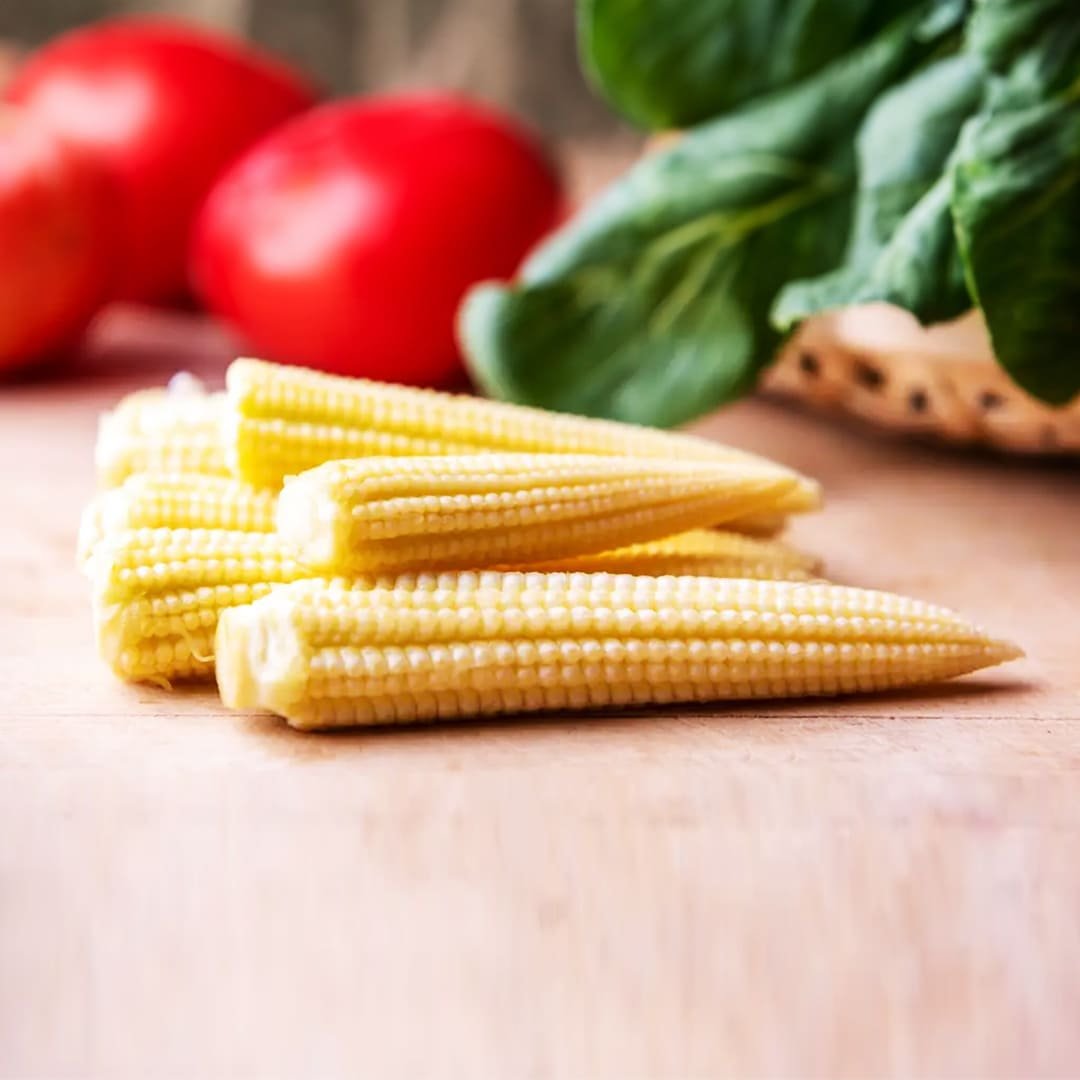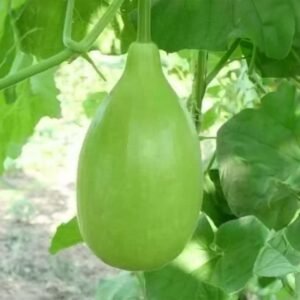Baby Corn (Makka) F1 Hybrid Seeds
Original price was: ₹85.00.₹39.00Current price is: ₹39.00.
Product Information:
- Number of Baby corn seeds (makka ke beej): 20 Seeds
- Where to grow: Balcony or terrace garden
- Growing season: Summer and Rainy
- Sowing method: Direct
- Seeds sowing depth: 2-2.5 cm deep
- Germination temperature: 20-30°C
- Germination Time: 6 to 10 days
- Harvesting: 50-60 days of planting
- Plant vigor: Strong plant
Product Description
Baby corn is thin, measuring approximately 1 to 2 centimeters in diameter and 4 to 10 centimeters in length, with a straight and slender cylindrical shape that tapers slightly toward the ear’s ends. When sold fresh, baby corn is available encased in its green husk or shucked. The cobs are coated in tiny developing kernels, which vary in color from pale yellow to cream, and are arranged in vertical rows. In comparison to mature corn, baby corn is entirely edible, and the cobs are somewhat malleable. Tender and succulent with a snappy crunch, baby corn has a moderate, slightly sweet, earthy, and vegetal flavor. Baby corn is available canned during the year. When it is in season, it is best in the spring and summer.Baby corn also known as young corn or baby sweetcorn, which is very popular in India. It is the best way to green up your home because corn purifies the air and helps to add oxygen to the air. Corn is very helpful for our health, an antioxidant that cures many major diseases like cancer and heart disease.
uses of Baby corn
- Baby corn has a meager calorie count. Baby corn contains just 26 calories per 100 grams. By including the lovely vegetable in your weight-loss diet, you can be able to shed some fast and easy pounds.
- Baby corn harvested at the proper age contains a high concentration of beneficial fibers.
- Fibre adds weight to the stool and helps maintain daily bowel movements. Fiber is the slowest to ingest, resulting in the sense of fullness. This sensation serves as a deterrent to bingeing on other high-fat foods.
- Although corn is well-known for its high starch and carbohydrate content, baby corn has a lower starch content. Additionally, it contains very little fat, making it a safer option for weight loss.
- Baby corn is a nutrient-dense vegetable. Along with essential fibers and proteins, baby corns are a powerhouse of antioxidants.
- Baby corn is an excellent source of soluble and insoluble fibers. Fibres aid in the stimulation of a healthy digestive system. A healthy digestive system can also aid in weight loss that is both healthy and successful.
- Yellow baby corn, like mature corn, contains a significant amount of carotenoids. Carotenoids promote eye protection and help prevent cataracts.
- Baby corn is high in folate. Folic acid is believed to be critical in preventing neural tube congenital disabilities in the fetus. Pregnant women may wish to incorporate baby corn into their pregnancy diet to ensure proper nutrition. From weight loss to maintaining balanced vision, baby corn is a wellness treasure trove.
- Baby corn is an excellent source of a variety of nutrients. Additionally, it includes dietary fiber and protein, as well as essential antioxidants.
Baby Corn Plant Care Tips
- Sunlight: Corn plants prefer 6-8 hours of full sunlight.
- Water: Give regular water to your corn plant during summer days and give water every alternate day in the winter season.
- Soil: Corn plants will grow best in well-drained soil, fertile and loamy soil, and keep the soil moist.
- Temperature: Baby Corn plant grows best at temperatures between 21-32°C.
- Common pests and diseases: Some pests like snails, aphids, and earworms attack corn plants, and some diseases that can affect your baby corn plants are grey leaf spots, rust, downy mildew, ear rot, and many others. Look for the early signs of fungal, insect, or other infections, and spray organic pesticide neem oil to cure these symptoms.
- Weeding: For fast growth of corn plants, weeding should be done regularly, and careful not to damage the roots during weeding.







